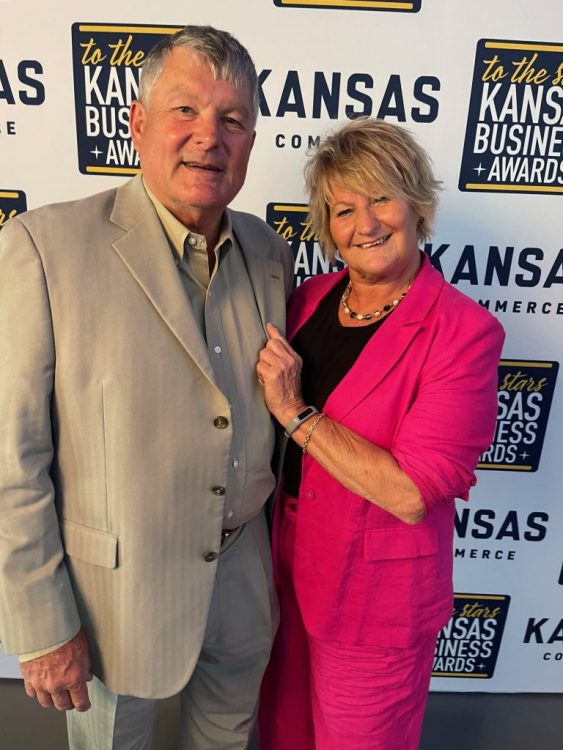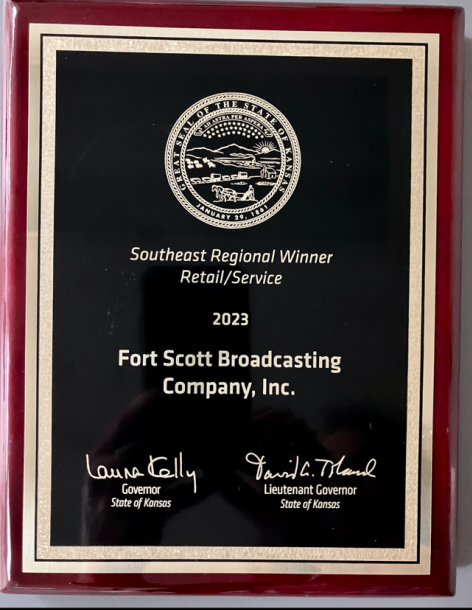|
|
|
|
|
|

We’ve all seen the Medicare ads that will make you wonder if you are missing out on important benefits. This is not necessarily the case and there is no need to ponder this concern alone! Trained and unbiased Senior Health Insurance Counselors are available to visit with you and see what works best for your situation.
Medicare Annual Election Period, running from October 15th-December 7th, is a great time to ask your questions! Call 620-244-3826 to schedule an appointment. Until then, here are some Medicare basics:
Medicare is a federal health insurance program that can cover:
Medicare Part A is hospital insurance that covers:
Medicare Part B is medical insurance that covers:
Medicare Advantage Plans are also called Medicare Part C:
Medicare Part D is Prescription Drug Coverage:
Medicare Supplement Insurance (Medigap):
Medicare Savings Program (MSP)
Part D Extra Help:
For more information, contact Tara Solomon-Smith, [email protected], or call 620-244-3826.
# # #
Kansas State University Agricultural Experiment Station and Cooperative Extension Service
K-State Research and Extension is an equal opportunity provider and employer. Issued in furtherance of Cooperative Extension work, acts of May 8 and June 30, 1914, in cooperation with the U.S. Department of Agriculture, Director of K-State Research and Extension, Kansas State University, County Extension Councils, Extension Districts.
|
|
TOPEKA – Governor Laura Kelly announced today that the Kansas Main Street program is seeking new communities to join the program in 2024. Kansas Main Street provides technical assistance and support for communities working to revitalize their downtown areas by focusing on economic vitality, design, promotion, and organization.
The Kansas Main Street program was initially launched in 1985 but was ended in 2012 under the Brownback Administration. Governor Kelly restarted the program in 2019 with support from the Kansas Legislature.
“The Kansas Main Street Program has been crucial to preserving and growing downtowns across the state,” Governor Laura Kelly said. “Downtown areas are the heartbeat and pride of most communities across Kansas, and improving these community pillars is part of how we’ll bring new jobs to the area.”
Communities wishing to submit applications must first attend a virtual application workshop, which will explain the Main Street Approach and the process for completing the application. Main Street Kansas will host the next virtual application workshop at 10 a.m. Monday, November 13.
Applications for the Kansas Main Street program will open on December 4 and close on January 26, 2024. Applications will be reviewed in February, with new communities announced in March.
“Eleven communities have been added since Governor Kelly brought the Kansas Main Street program back in late 2019,” Lieutenant Governor and Secretary of Commerce David Toland said. “These Kansas communities now have the resources and tools needed to support economic development and breathe new life into their downtowns and historic commercial districts.”
Benefits of earning designation as a Kansas Main Street community include:
“The Main Street Approach is a proven economic development tool, especially for small, rural communities,” Kansas Main Street Director Scott Sewell said. “It has been a great resource for communities in Kansas, and we always encourage more participants in the program.”
Registration for the November 13 application workshop is required, which can be completed here.
For more information on the Kansas Main Street program, click here or contact Director Scott Sewell at (785) 230-6404 or [email protected].
###
Federal grant awarded to improve efficiency and access to Kansas Food Assistance program
TOPEKA – The USDA’s Food and Nutrition Services (FNS) program has announced the awarding of a Process and Technology Improvement grant of $706,550 to the Kansas Department for Children and Families (DCF). The grant will enhance the digital system that accepts SNAP, known as Food Assistance in Kansas, applications.
“Our main goal is to reduce status wait times, improve data accuracy, and enhance the overall client experience,” DCF Secretary Laura Howard shared. “This will result in Kansans receiving Food Assistance benefits in a timely manner and ensuring that Food Assistance continues to effectively serve as the primary defense against hunger.”
The FNS Process and Technology Improvement grants supports efforts by state agencies and their community-based and faith-based partners to develop and implement projects that use technology to improve the quality and efficiency of SNAP application and eligibility determination systems.
DCF will automate manual Food Assistance administrative tasks using BOT automation. Using this technology, the agency will be able to register cases, enter data, and create workflow tasks for caseworkers all without human intervention. Workers will receive notification of an issue with an application and then will follow-up with the Kansan to ask questions or get additional details.
In FY 2022, DCF received 147,224 Food Assistance applications. Currently, the state has 95,047 Food Assistance cases that are made up of 106,699 adults and 84,343 children. DCF is working in partnership with Accenture, the technology business manager of the data management system used by the agency for the benefit programs.
The teams will begin working immediately on the upgrades and have up to three years to complete the project using the funding from the FNS grant.
###
USDA’s Food and Nutrition Service (FNS) works to end hunger and improve food and nutrition security through a suite of more than 16 nutrition assistance programs, such as the school breakfast and lunch programs, WIC and SNAP. Together, these programs serve 1 in 4 Americans over the course of a year, promoting consistent and equitable access to healthy, safe, and affordable food essential to optimal health and well-being. FNS also provides science-based nutrition recommendations through the co-development of the Dietary Guidelines for Americans. FNS’s report, “Leveraging the White House Conference to Promote and Elevate Nutrition Security: The Role of the USDA Food and Nutrition Service,” highlights ways the agency will support the Biden-Harris Administration’s National Strategy, released in conjunction with the historic White House Conference on Hunger, Nutrition, and Health in September 2022. To learn more about FNS, visit www.fns.usda.gov and follow @USDANutrition.
|
|
|

A local business was recognized during the recent ceremony by The Kansas Department of Commerce held in Wichita on Oct. 12.
To The Stars: Kansas Businesses Awards is an annual awards program that recognizes businesses across the state for the valuable contributions they make to the Kansas economy and to the well-being of their communities, according to https://www.kansascommerce.gov/kansasbusinessawards/.
Fort Scott Broadcasting Co. Inc was recognized as the Southeast Kansas Regional Winner in Retail and Service. Tim and Deb McKenney are the owners of the business.

“Deb submitted the information,” Tim McKenney said. “It was really just a statement about the station’s 70th birthday under the same family ownership and management coming up next year. She mentioned some of our programs we air regularly such as the city, county, and school talk shows to keep folks in tune with current happenings in the area.”
“The award was for 69 years of community service to our community,” Deb said.

The categories were:
Businesses and individuals from across the state were honored for their outstanding contributions to Kansas communities and the state’s economy at the ceremony, according to a press release.
Governor Laura Kelly announced at the ceremony that Atwood-based SurePoint Ag Systems has won the 2023 Governor’s Award of Excellence and Tank Connection in Parsons earned the Governor’s Exporter of the Year Award, according to the press release.
A record 297 businesses, organizations and individuals were nominated in nine categories for this year’s To the Stars: Kansas Business Awards, according to the release. Nominees were reviewed and scored for various criteria such as business expansion, employee recruitment and retention practices, training and educational programs, capital investments, and support of local community events. A total of 245 Merit Awards and 43 Regional Awards were presented at the event. Additionally, one nominee in each category was designated a Statewide Winner, making them finalists for the Governor’s Award of Excellence.
To view the list of award winners: https://www.kansascommerce.gov/kansasbusinessawards/#h-merit-award-winners
In the regional award winners division for retail/ service across the state, the winners were:
From the Southeast section of the state, the regional winner was Fort Scott Broadcasting All Hit 103.9 fm, 98.3 fm, and 1600 am.
East Central
JT’s Grill
Northwest
Shores Napa Auto Parts
Northeast
Lumber House True Value
South Central
Country at Heart
Southwest
Jetmore Veterinary Service
TOPEKA— Today, in accordance with Executive Order #20-30, Governor Laura Kelly directed flags be lowered to half-staff at the State Capitol Complex and all court buildings and facilities until Monday, October 23, 2023, to honor 21st District Magistrate Judge William Malcolm, who died from injuries sustained in a car accident earlier this month.
“Judge Malcolm was a dedicated public servant who, for nearly two decades, worked hard to ensure justice for the citizens of Clay and Riley counties,” Governor Laura Kelly said. “On behalf of the State of Kansas, I thank him for his service. My deepest condolences go out to his loved ones.”
Judge Malcolm passed away on October 15, 2023. A public visitation will be held on Sunday, October 22, 2023.
To receive email alerts when the governor orders flags to half-staff, please visit: https://governor.kansas.gov/
###
CORRECTED: Child Support Services Impacted by Kansas Court’s Network Security Issue
TOPEKA – Due to the network security issue announced by the Kansas Judicial Branch last week, the Kansas Department for Children and Families (DCF) is informing Kansans of delays that will occur to those working with the agency’s Child Support Services.
DCF works daily with Kansas courts to process child support court orders and payments on behalf of Kansas families. With the efiling and electronic court records system offline, Kansans should expect delays on returned filings, court hearings and orders being entered. Child support payments that are awaiting court orders or direction from DCF, Court Trustees, and county clerks will be delayed. Any orders filed prior to the week of Oct. 9 should continue to process properly.
DCF and its contracted partners of YoungWilliams and Maximus will continue to provide full-service operations through paper and fax filings. Johnson County is not impacted by this as the county operates on an efiling and case management system used only by the county.
Individuals with cases in process should consult the Child Support Services customer hotline at 1-888-757-2445 with questions or status information. Updates will be provided at the Kansas Payment Center website www.KSPayCenter.com.
|
|
|
|